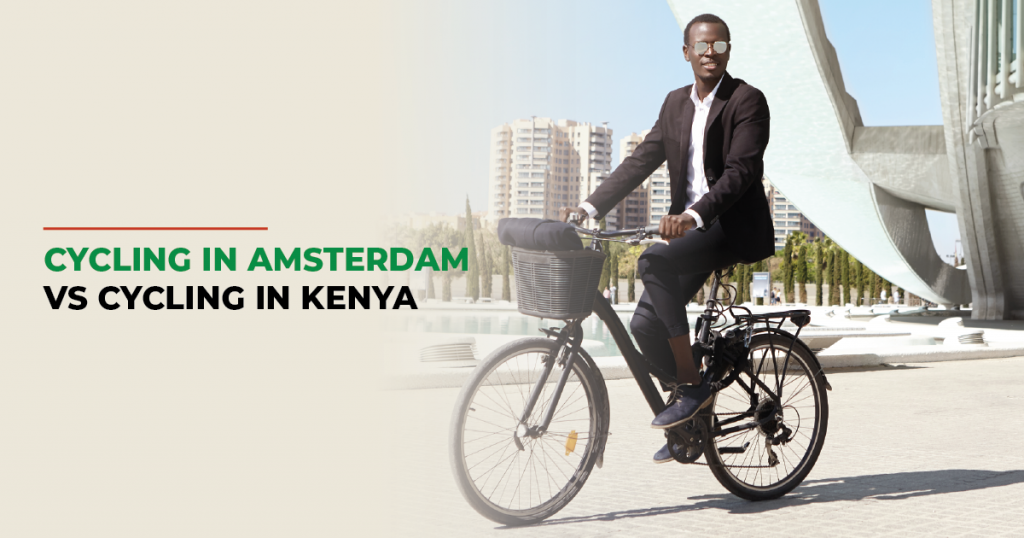A few weeks ago, I had a chance of visiting the iconic city of Amsterdam. One thing that struck me once I stepped out of ‘Amsterdam Centraal’ train station, was the sheer numbers of bikes everywhere.
Cycling in Amsterdam city can largely be traced to a combination of favourable geographic conditions and thoughtful urban planning.
Population growth

The postwar economic boom in the Netherlands saw the rise of population in cities like Amsterdam, Rotterdam and Eindhoven. The inhabitants of the Dutch capital became increasingly enamoured with covering distances rapidly and comfortably by car.
By the 1970s, the car had become Amsterdam’s preferred means of transportation. From 1955 to 1970, the bicycle’s share of all trips taken by Amsterdam residents fell from as high as 75 percent all the way to a low of 25 percent. Again, even after paving over many of the city’s canals, road congestion and traffic jams continued to get worse.
Bicycle Vote

Congestion of Amsterdam led to a referendum by the public to vote over the fate of the motor vehicles. In a win for the environment, the city’s voters favoured reclaiming the streets for cycling.
Since the 1970s, Amsterdam’s urban planners have gradually gone about making the city increasingly friendly to bikes and more difficult and costly to navigate by car. From 2006 to 2010, the city planned to invest more than Ksh 1.6 Billion in bicycle paths, parking, and safety.
Over time, streets that were once meant for cars have been converted to dedicated bike paths. The bikes have access to many places that cars do not. Bike paths connect conveniently to public transportation, including metro and bus stations.
A trip across Amsterdam that would consume an hour by car takes about half the time by bike. Across the country, sixty percent of Dutch people ride their bikes at least three times per week
Lessons learnt
As Amsterdam solved its congestion issues, Nairobi should probably embrace that. Instead of going for expensive projects like trams and interchanges. Bikes could offer real solutions to Nairobians who on average waste 4 hours every day fighting traffic jams.
In short, Making our roads bike friendly will in effect reduce time spent time on the roads. Similarly, it will enhance physical fitness and less emissions. Share your thoughts with us.
